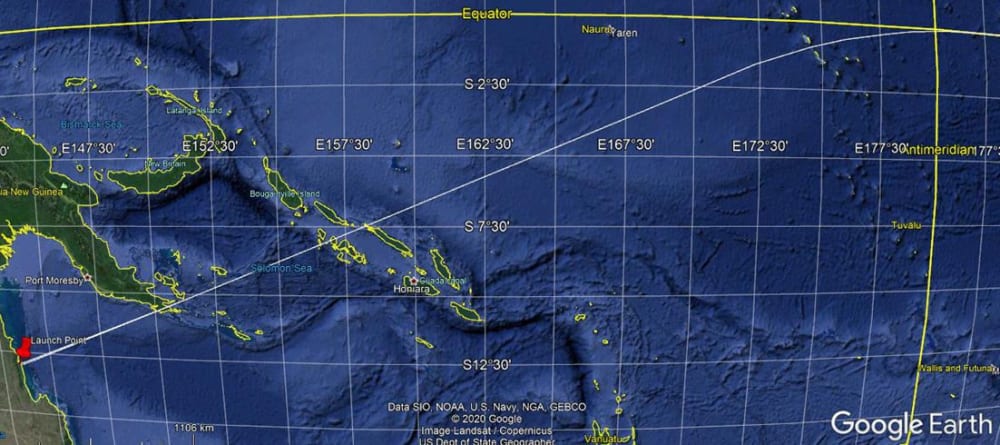Introduction:
Calculations based on NASA's 'Simu' programs show that a single stage to semi-synchronous equatorial orbit, SSEO, with a 100% re-useable craft, propelled by clean, supercooled maglev launch boost, hydrogen/air turbojets, and hydrogen/air rockets, is feasible with a solar powered manufactory generating energy, and condensing, distilling, and storing, propulsion and cooling gases from the atmosphere.
The initial capital cost is offset by eliminating replacement costs and by reducing energy expenditure at launch.
The semi-synchronous orbit locates a staging satellite serviced from the ground supporting deployment and servicing of a geosynchronous satellite to further other space projects.
Flight to SSEO:
SC maglev launch accelerates the craft, from a cradle, at 1.5g 14.72m/sec^2, to Mach 0.8, 272m^2, from an initially straight, inclined, SC maglev track, leading through a transition curve of 7.55km radius to separate from the launch cradle at 14.8 degrees to the Earth's surface, 2.5 km from the start point.
From the launch point, the craft accelerates with hydrogen/ air turbojets augmented by increasing hydrogen/rocket power as turbojet primary power diminishes with altitude. The crafts pitch attitude is gradually aligned with the Sun/Earth radial. At 15km altitude, turbojet power ceases, and rockets power the craft to semi-synchronous orbital altitude, c.20.25km, and velocity c.3.87km/sec, are reached.
The launch cradle, on separation, continues under SC maglev braking assisted by hydrogen/Air turbojets is brought to a standstill on the remaining 2.5 km of maglev track and returned to the start point.
Return Flight to Earth:
Because much of its launch mass has been consumed in making orbit and delivering cargo, the craft is much lighter, and fuel consumption is lower. The craft, initially flying 'backwards', retards its velocity with Hydrogen/Oxygen rocket thrust, maintaining this attitude until reaching a short distance above the Karman line. At 100km altitude, initiating turbojet power, it wheels over, rotating in the yaw plane to present a more stable aerodynamic profile, stabilizes in normal flight, and under turbojet/rocket power, slowed by vectored thrust, flies to a landing on its launch site airstrip, where it is maintained, reconditioned, refueled and reloaded for its next flight.
Notes:
- Rocket power requires provision of 8 kilograms of oxygen for each kilogram of hydrogen, while turbojet power requires only the weight of hydrogen consumed thereby compensating for the weight of turbojet engines.
- Providing ground power for the SC maglev saves the onboard fuel penalty of accelerating the full fuel load from standstill.
- Concorde flew to 18.3 km altitude reaching Mach2 using half its loaded fuel.
- Atmospheric density at the 'Karman Line' (at 110km altitude) is 0.000,000,195 kg/m^3.
- The ground systems and low drag design of the craft can be proven in safe local launch and landing flights.
- The staging satellite will have solar power, accommodation and storage space, working spaces and equipment, and facilities for observation, detection, and defense against colliding space 'junk'.
Like this entry?
-
About the Entrant
- Name:James Munro
- Type of entry:individual
- Software used for this entry:Designcad 3d max 27, Microsoft Excel, Word.
- Patent status:none





